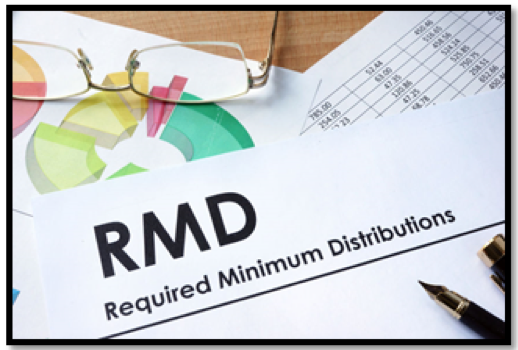
AGE 70½ … OR ABOUT TO BE … WITH AN IRA?
Be Aware of Your Required Minimum Distributions
June 2019

The good news is that you enjoyed years of tax deductions and (hopefully) tax deferred growth in your IRA account.
Now, at age 70½ or close to it, you need to be knowledgeable regarding
Required Minimum Distributions (RMD) as required by U.S. tax law.
Quick Summary
In simplest terms, IRA money must start flowing to you in specific, minimum incremental amounts no later than April 1 following the year you reach age 70½. Other than Roth IRAs, RMD withdrawals apply to all other individual retirement accounts … IRA, Simple IRA or SEP IRA.
Note: Roth IRAs are not subject to mandatory withdrawals until after the death of the owner.
Your distribution amount will change from year to year based on accepted IRS tables that model anticipated life expectancy. Since life expectancy estimates diminish with age, RMD will vary as well. Quick example: Two individuals, ages 71 and 75, each have IRAs worth $100,000. The RMD for the 71 year old is $3774 annually; while the 75 year old has a required RMD of $4,367. (According to the Uniform Lifetime Table calculations - the most commonly used life expectancy chart in determining RMD.)
Click here for an automated calculator to estimate your RMD based on the specifics of your age and value of your IRA.
Frequently Asked Questions
There are four questions that are commonly asked and may be on your mind as well. It’s likely you will have others that we’d like to help you with … just give us a call or drop an email … we’ll respond promptly.
1. If you have several IRA accounts, must you take the RMD from each account?
No. You may take the RMD from one or a combination of accounts. The key thing is that you withdraw, in total, the RMD amount. Consider withdrawing from smaller balance accounts and close them out to simplify and consolidate your IRAs.
2. Do you need to take your entire RMD all at one time?
No. Frequency of withdrawals is not an issue. The important thing is that, in the aggregate, all of your withdrawals add up to your RMD in the year required.
3. Should you appoint a named beneficiary for each of your IRAs?
Yes. By so doing you will avoid your IRA account balance(s) being included in your estate in the event of your death.
4. Are there consequences if I don’t withdraw my RMD as required?
Yes. You may be subject to a 50 percent excise tax on the amount not distributed.
Other Considerations
The foregoing is not meant as a comprehensive recount of the RMD requirements. There are other considerations that may apply in your specific circumstances. Some issues may include:
• Inherited IRAs and RMD after account owner dies
• RMD based on Joint Life & Last Survivor Expectancy Table if your spouse is more than 10 years younger than you and is sole beneficiary
If any of the foregoing seems unclear as to how it applies to your specific circumstances, please keep in mind that Blair + Assoc can help. Give us a call or drop an email. We’ll respond immediately.
